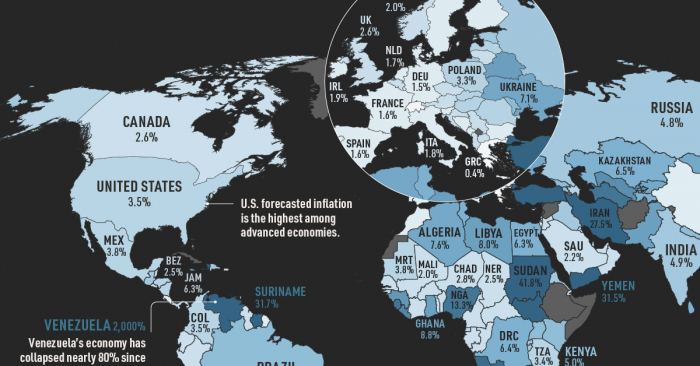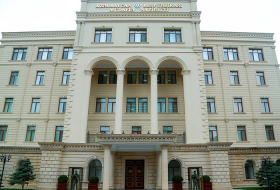Nijat Hajizadeh, heat of department at the Centre for Analysis of Economic Reforms and Communication (CAERC) has offered interesting insights on what the global inflation is about and the methods of solving the problems it causes in his interview to AzVision.az.
- What are the factors that determine the high level of inflation and rapid price hikes many economies are facing?
‘The energy market became more expensive as of the second half of 2021. The disruptions of logistics chain due to the pandemic also added fuel to the controversy. Most countries are integrated into the global value chain, and they faced serious problems with importing raw materials and procuring products required for manufacturing industry in the context of integration. Considering that several countries, including Azerbaijan, import finished products from the Eurozone, such import inflation had a direct impact on the economies of these countries, causing price hikes.’
- Even the strictest lockdowns during the COVID pandemic hadn’t shaken the logistics system as much as now. How would you explain the negative factors that is directly influencing the trade chains?
‘The COVID-19 pandemic had introduced another factor, which was the upheaval in the labour markets. When things were still uncertain during the pandemic, many people changed jobs due to paralyzed logistics and only a few of them returned to work. Migrants comprise the majority of workforce in logistics and transportation companies in the United States and the Eurozone. Those migrants returning to their home countries or resorting to other fields altogether became the main reason behind the price booms and delays in the overall logistics chains.
Delays in supply chains also increase production costs, because under current circumstances the Eurozone countries and all others with developed manufacturing industries do not have widely diversified expectations for raw materials as they used to. While the countries used to have an abundance of selection for their raw material orders, the 2020 shutdowns in raw material production in several countries, failure to recover in 2021 and lack of overall revival have caused supply to fall short of demand. This certainly had its effect on the increase of production costs. In this case, production delays are also closely related to logistical lags.
The growth in prices for gasoline and diesel in global markets can also be considered a reason for the increase in the cost of transport and logistics services, which ultimately affects the retail prices for transported goods.
One of the challenges in logistics systems is the approach the countries choose regarding import-border regulations. A number of countries have started applying non-tariff regulations and barriers, drifting towards more protectionist policies. The WTO (World Trade Organization) statistics show that the application of non-tariff barriers in 2020-2021 has grown about 2.5-fold compared to 2019. The purpose is to protect their populations from the virus and prevent infection through imported products and services. This is certainly one of the issues affecting the supply chain.
The escalation of time and costs spent at border points is another factor. In any case, logistics and transportation services have much revived compared to 2020.
We have been counting the events with negative trajectory. At the same time, 2021 saw a resurgence of services. The renewed growth of production and investments has also revived the supply and transport chain.’
- Foodstuffs are becoming more expensive. There are claims that some of them are in short supply. Some countries have even banned the export of certain food products. Do you believe the situation is really this grave or are these mere speculations?
‘Mobilization in energy prices, supply chains and labour markets, the global migration crisis, restrictions on production and exports, geoeconomic-geopolitical events, such as the Russia-Ukraine military conflict and a number of negative trends in the Asian zones have all played a part in price increases. Russia and Ukraine are the world’s largest grain producers and exporters. Ukraine meets most of the grain and wheat needs of the European zone. The Russian Federation also has a big share. The world needs these two countries in overall global trade, especially for the foodstuffs. Many countries are suffering from this conflict.
However, the price-hikes for food had started before the conflict. The FAO (Food and Agriculture Organization of the United Nations) reports that the price surges for foodstuffs are mainly caused by the increase in energy prices, if we take the pandemic year as the baseline. The increase in production costs and import prices and disruption of logistics and supply chains all happened at the same time. Nevertheless, we have been experiencing a relative setback in food prices, caused by seasonal factors. If the price growth maintains at the current level and the war in Eastern Europe does not stop, the prices will have sturdier conditions to grow. This will increase inflation expectations, which might lead to further price hikes.
The most important factor is for the countries to implement regulatory measures in this regard. This may neutralize the overall effect of inflation.’
- What steps should the financial and economic systems of states take to minimize the impact of these complications?
‘Several states adopted fiscal packages during the pandemic, which certainly caused currency, particularly dollar-euro bubble in the global market. The current decisions by the financial institutions of both the US and the EU, however, are targeted at raising interest rates and slowly but surely reducing the accumulated money bubble. The main purpose here is to keep inflation in check.
All countries should implement other regulatory factors as well. The key aspect is for the central banks to balance the exchange rate. Raising interest rates is considered a crucial economic tool, especially while talking strict monetary policy.
The Cabinet of Ministers has recently decided to subsidise food production. Such steps will also help curb inflation. At the same time, imported inflation caused by outside factors is considered the main source of inflation in Azerbaijan. Basically, foreign inflation enters the country as a part of imported finished products and raw materials. In many cases, this may also include imported services.
The price increases in domestic production also derive from exported raw material components. One of the crucial challenges for Azerbaijan is to increase the volumes of local production, because it has a neutralizing effect in preventing inflation of foreign origin. Although it is impossible to avoid this impact once and for all, the effect will at least be better than full-fledged import inflation.’
AzVision.az
















































